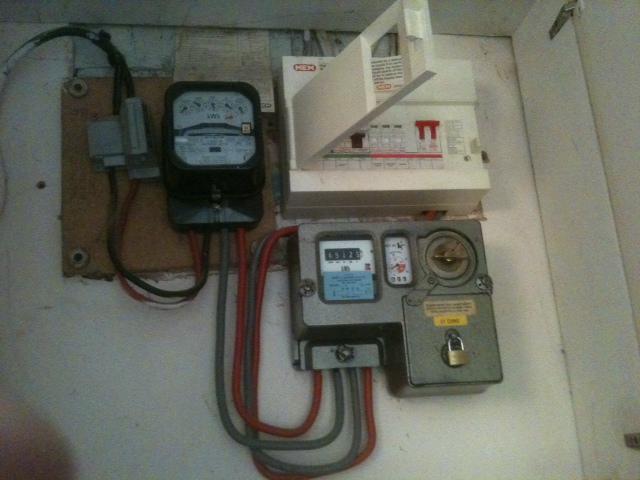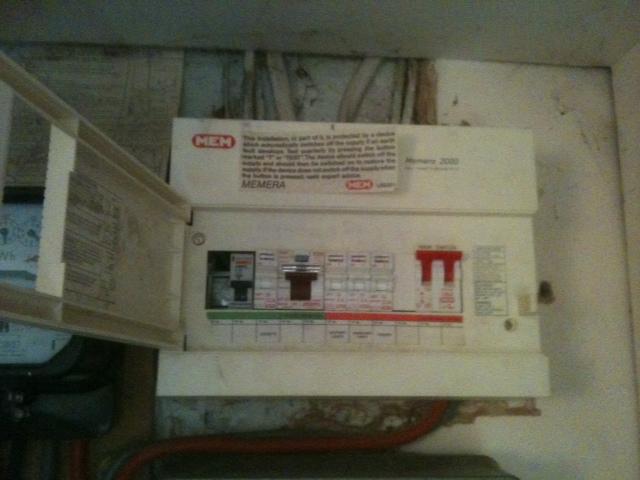Hello,
Doing some work in a workers farm cottage and while changing a light switch I took a picture of the CU, as Im not sure if it's safe?
TT earth.
Will upload pic tomorrow as stupid iPad won't allow me to upload pics.
plastic CU is half protected by integral 80ma rcd but there is a metal coin meter fitted after the main meter, which looks like it's not earthed.
Is this right?
[/b]
Doing some work in a workers farm cottage and while changing a light switch I took a picture of the CU, as Im not sure if it's safe?
TT earth.
Will upload pic tomorrow as stupid iPad won't allow me to upload pics.
plastic CU is half protected by integral 80ma rcd but there is a metal coin meter fitted after the main meter, which looks like it's not earthed.
Is this right?
[/b]



